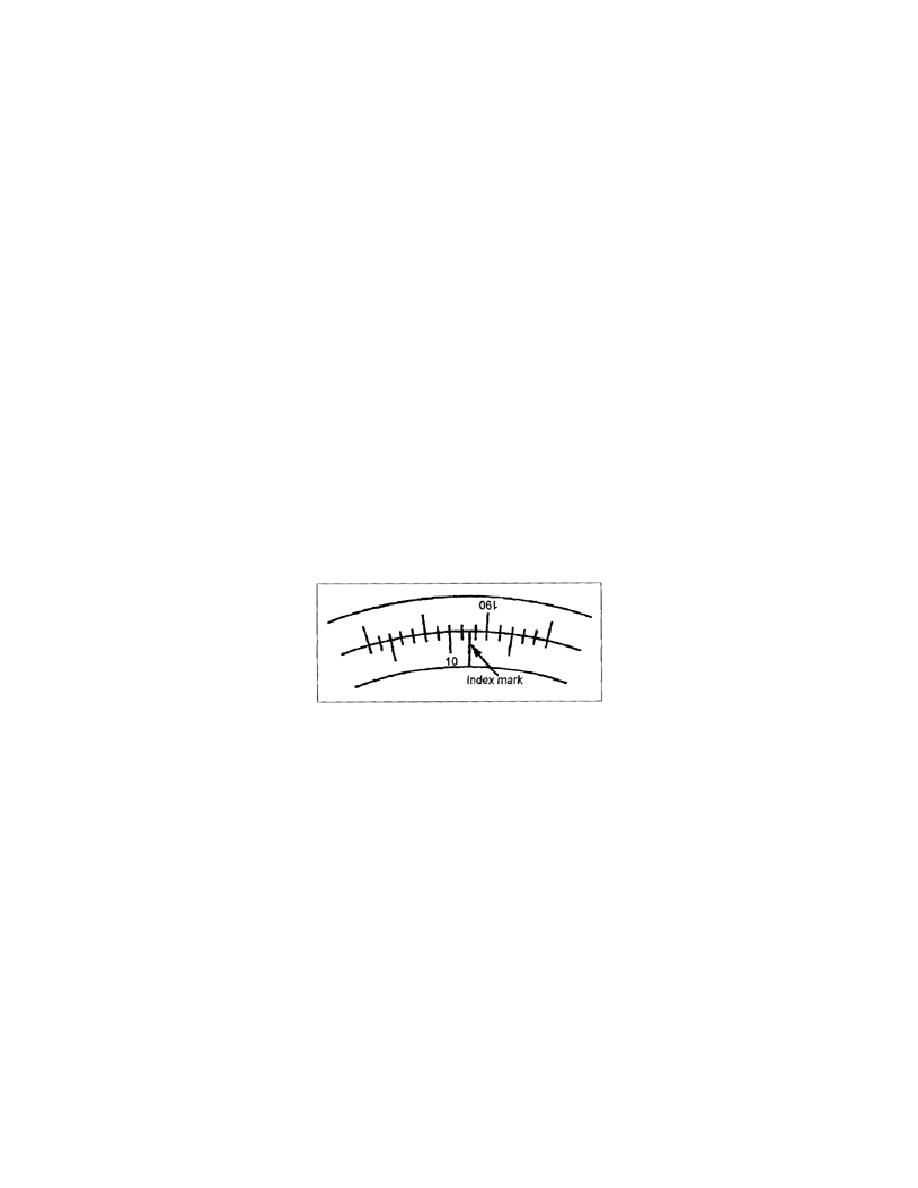
out of adjustment. If the index mark is used, it should be checked each time the instrument is
transported, as it may be thrown out of adjustment.
(5) In the first method, the presence of the index mark was completely disregarded. As
previously explained, once it has been proven that the index mark is not out of adjustment, it may be
used to determine the minute value of the reading. This is the faster and easier method of determining
the minute value. The index mark always refers to the degree of the lower erect image or lower circle.
Using the index mark in this way (in relation to only the lower circle), each graduation is equal to 4
minutes. When the coincidence is made between the images of both sides of the horizontal circle, or the
upper and lower circles as they appear in the circle telescope, the index mark will always be either on a
graduation line or halfway between two graduation marks. There are two ways to determine the minute
value using the index marks on the lower circle. If the index is on a graduation line, the minute value is
four times the number of graduations between the degree mark to the left. If the index is halfway
between two marks, add 2 minutes to four times the whole number of graduations between the degree
mark to the left and the index mark to obtain the minute value.
Example 1: When the true degree value shows in the circle telescope as does 10 in Figure 3-11, the
value of the direction equals--
10 , + (1 division x 4') + 2'
10 , + 4' + 2'
10 06'
Figure 3-11. Determining the Minute Value Using the Index Mark (Visible True-Degree Value)
Example 2: Since the index mark in Figure 3-12 is to the left of the 10, value shown in the lower circle,
the minute value must be subtracted from the visible 10 value in order to give the true value of the
direction. Thus, when the true degree value (9) does not show in the circle telescope, as is the case in
Figure 3-12, figure the minute value between the index mark and the degree mark to the right and
subtract as follows:
= 10 , - (3 graduations x 4' ) + 2'
= 10 , - (12 ' +2 ' )
= 10 , - 14 ' = 9 , 46 '
EN0593
3-22



 Previous Page
Previous Page
